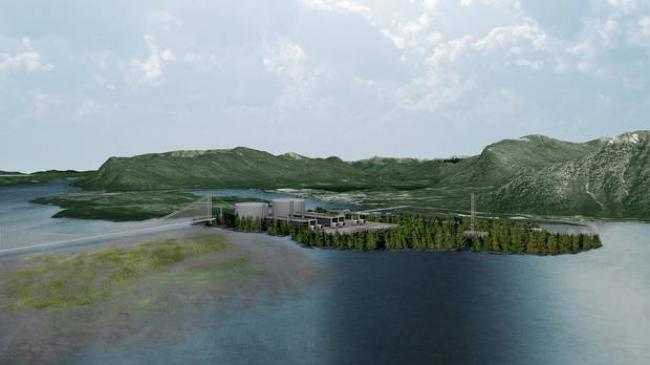Articles Menu

TransCanada Corp. has received provincial permits to build a natural gas pipeline that would feed Pacific NorthWest LNG’s planned export terminal near Prince Rupert.
The Prince Rupert Gas Transmission (PRGT) route would start at a northeast B.C. site near Hudson’s Hope and stretch nearly 900 kilometres to finish on Lelu Island. The Pacific NorthWest LNG consortium led by Malaysia’s Petronas wants to construct an $11.4-billion plant on Lelu Island to export liquefied natural gas to Asia.
The B.C. Oil and Gas Commission granted approval to TransCanada to build and operate the $5-billion pipeline, the company said Tuesday. The firm estimates that more than 780 kilometres of pipe will go over land and 110 kilometres will cross water.
“Receiving the full complement of 11 pipeline and facility permits is a major milestone for the project, and concludes an exhaustive regulatory process that we embarked on more than two years ago,” PRGT president Tony Palmer said in a statement. Mr. Palmer replaced Dean Patry as the project’s president on Oct. 1. Mr. Patry remains with TransCanada, serving as a senior vice-president.
Last month, TransCanada announced that the Metlakatla First Nation became the eighth aboriginal group to support the pipeline project. The Gitanyow also back PRGT, but are worried about Pacific NorthWest LNG’s selection of Lelu Island as the site for the proposed LNG terminal, Gitanyow hereditary Chief Glen Williams said in an interview.
Mr. Williams raised concerns about the risks to juvenile salmon habitat in Flora Bank, a sandy area located next to Lelu Island. Pacific NorthWest LNG, however, is offering assurances that its project won’t be harmful to fish in the Skeena River estuary.
TransCanada has six pacts with aboriginal groups for its Coastal GasLink pipeline project, which would supply natural gas to the Royal Dutch Shell PLC-led LNG Canada venture in Kitimat. TransCanada, which recently noted that it is considering an alternative route for a 56-kilometre portion of Coastal GasLink, said it is continuing to pursue ways to resolve an impasse with a Wet’suwet’en clan known as the Unist’ot’en.
PRGT and Coastal GasLink are two of the proposed pipelines contemplated for B.C.’s fledgling LNG industry. Proponents in the province are seeking to meet energy demand in Asia, but industry analysts caution that a global glut of LNG supplies looms.
Of the 20 B.C. LNG export proposals so far, Pacific NorthWest LNG’s project is widely considered the front-runner, despite facing opposition from some Lax Kw’alaams leaders and delays in gaining approval from the Canadian Environmental Assessment Agency.
Earlier this week, B.C. Environment Minister Mary Polak and Natural Gas Development Minister Rich Coleman issued a provincial environmental certificate to Woodfibre LNG for its plant near Squamish, subject to the facility meeting 25 conditions.
Byng Giraud, Woodfibre LNG’s vice-president of corporate affairs, said he is awaiting prime-minister-designate Justin Trudeau’s appointment of a new federal environment minister on Nov. 4 in hopes that Ottawa will clear the way for the project to start construction in 2016.
Environmentalists and the Squamish Nation Council have concerns about discharge from Woodfibre LNG’s planned cooling system, notably the impact that warm chlorinated water would have on small fish in Howe Sound.
“The issue of the cooling system has become all the more pressing due to herring spawning at shorelines,” according to a statement from critics on Bowen Island. “Concerned Citizens Bowen is standing up for the recovery and protection of Howe Sound.”
[End of article]